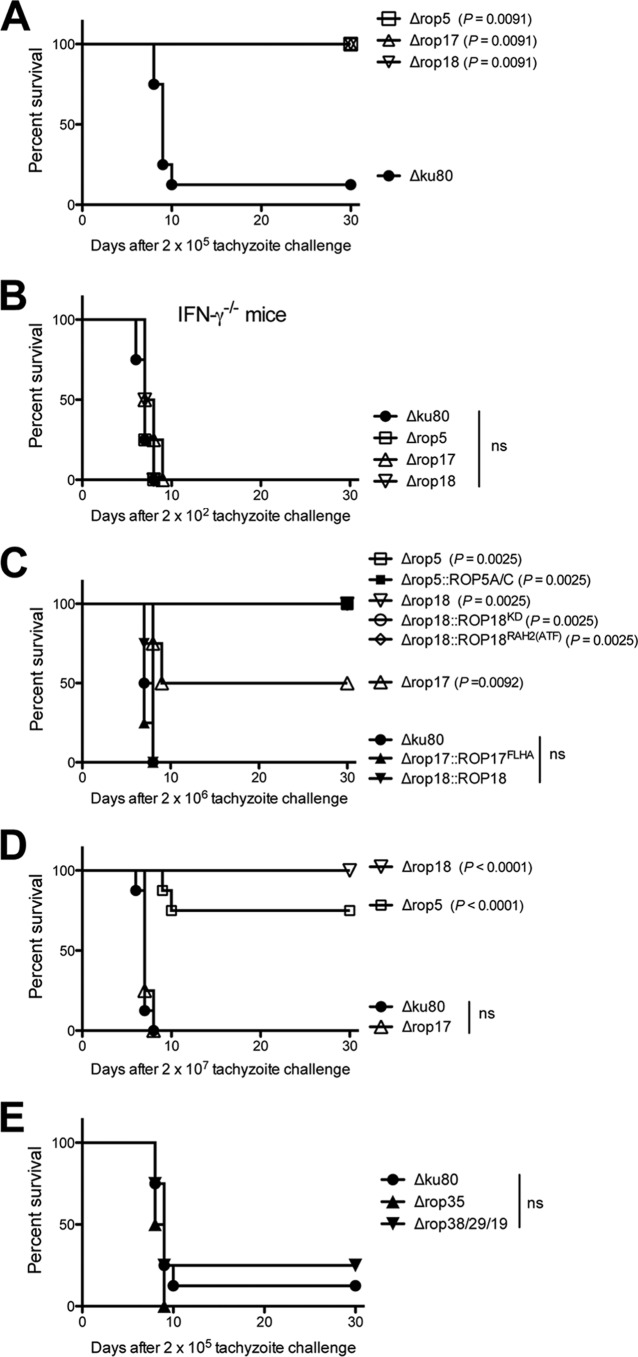FIG 6 .
Type II parasites deficient in ROP5 and ROP18 are less virulent than parasites deficient in ROP17, ROP35, or ROP38/29/19. The Δrop5, Δrop17, Δrop18, Δrop35, and Δrop38/29/19 mutants and complemented strains were evaluated for virulence lethality in mice. (A) C57BL/6 mice were infected i.p. with 2 × 105 tachyzoites of the Δrop5, Δrop17, or Δrop18 knockout strain or the Δku80 parent strain. Data shown are combined from two independent experiments, each with four mice per group. The P values were calculated by a log rank Mantel-Cox test, and a P of <0.05 was considered significant. (B) C57BL/6 IFN-γ−/− knockout mice were infected i.p. with 2 × 102 tachyzoites of the Δrop5, Δrop17, or Δrop18 strain or the Δku80 parental strain. Data shown are from a single experiment with four mice per group. The P values were calculated by a log rank Mantel-Cox test, and a P of <0.05 was considered significant. ns, not significant. (C) C57BL/6 mice were infected i.p. with 2 × 106 tachyzoites of the Δrop5, Δrop17, or Δrop18 strain or the Δku80 parental strain or with 2 × 106 tachyzoites of the Δrop5::ROP5A or Δrop5::ROP5C [shown together as Δrop5::ROP5A/C], Δrop17::ROP17FLHA, Δrop18::ROP18, Δrop18::ROP18KD, or Δrop18::ROP18RAH2(ATF) complemented strain. Data shown are combined from two independent experiments, each with four mice per group. The P values were calculated by a log rank Mantel-Cox test, and a P of <0.05 was considered significant. (D) C57BL/6 mice were infected i.p. with 2 × 107 tachyzoites of the Δrop5, Δrop17, or Δrop18 strain or the Δku80 parental strain. Data shown are combined from two independent experiments, each with four mice per group. The P values were calculated by a log rank Mantel-Cox test, and a P of <0.05 was considered significant. (E) C57BL/6 mice were infected i.p. with 2 × 105 tachyzoites of the Δrop35 or Δrop38/29/19 strain or the Δku80 parent strain. Data shown are combined from two independent experiments, each with four mice per group.

